#aetia
Text
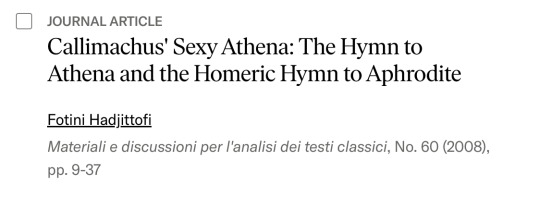
i periodically tell myself i should get more into callimachus
43 notes
·
View notes
Text
have been thinking about developing this into an essay for a long time but as a queer nonbinary person, the whole Callimachean/Neoteric aesthetic of lightness feels like a queer poetics for antiquity
21 notes
·
View notes
Text
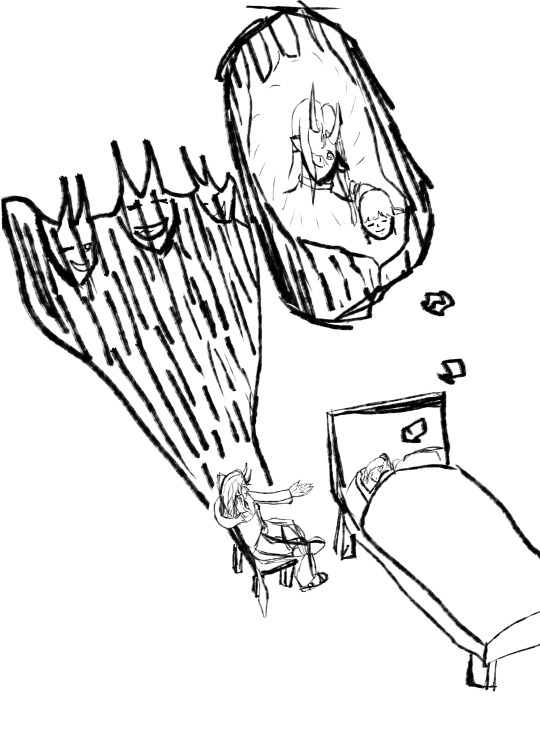
'Then again, I'm not sure why I never realized how we never came to an understanding of our own relationship. I don't think there was a single time she saw me as anything other than her responsibility.'
I've always imagined scenes where Calamitas is acting out stories for Aetia, since she wasn't allowed to speak with her. Ever since she altered her biology to get closer to her, maybe she thought that the problem had been solved. After all, Calamitas started taking better care of her, right?
#calamity mod#calamitas#terraria calamity#terraria#oc#Calamitas is not so good as the only parental figure of Aetia
5 notes
·
View notes
Text
hhhhgh okay. Okay. So I think you know by now that I'm a bit of a completionist when it comes to games. I'm running around still trying to finish stuff up, including the maps.
Do you know which maps I have completed?
Swordmarch
Origin (at least I HOPE)
Agnus Castle
Li Garte Prison Camp
Elgares Depths
Torus Hollow
Milio Trick Caverns
Colony Lambda
Keves Castle Floors 2-5 + Castle Drainage (again, I HOPE)
City Interior
Not so bad, right? Why would I be frustrated?
WELL.
Those are all either very, very small areas (Swordmarch, Li Garte, Agnus Castle) or sub areas (pretty much the rest of them). I don't even know if I've completed Origin or the Keves Castle floors because from what I have seen of them, their map segments aren't necessarily connected, so there could be other rooms of those I just haven't discovered yet!
And all the maps I haven't completed? They're the big area maps; you know, the ones that are actually satisfying to run around and explore. And explore them I have! I enjoyed it very much! But I don't know if I'm just missing something or what, because I feel like I've explored every corner of these maps and yet they're still. not finished. At this point I'm wondering if there's some new completion requirement for the maps beyond getting all landmarks, locations, and secret areas that the game just never mentioned, because frankly I have no idea where else to go or what else to do.
#xenoposting#special shout-out to upper aetia#which I would believe I had completed if there weren't still tiny bits of fuzz on the very boundaries of the map#literally where else do you Want me to go. please.#and ANGRY shoutout to cadensia because there is at least one area I can see that I KNOW I haven't been to yet#but I have no damn clue how to get up there#lavi sandbar my beloathed
1 note
·
View note
Text
And because I'm all for the strange, unusual, alternative, less common or local variants of myths, here are most of the accounts I know of that deviate more or less strongly from the traditional version of Hesiod where all the children of Kronos except Zeus are devoured at birth and then emerge from Kronos ready to assist their brother in the war:
Diodoros of Sicily, Library of History: The island which is called Rhodes was first inhabited by the people who were known as Telchines . . . and the myth relates that they, together with Kapheira, the daughter of Okeanos, nurtured Poseidon, whom Rhea had committed as a babe to their care.
Pausanias, Description of Greece: The following story is told by the Arkadians. When Rhea had given birth to Poseidon, she laid him in a flock for him to live there with the lambs, and the spring too received its name just because the lambs pastured around it. Rhea, it is said, declared to Kronos that she had given birth to a horse, and gave him a foal to swallow instead of the child, just as later she gave him in place of Zeus a stone wrapped in swaddling clothes.
Tzetzes, Commentary on Lycophron's Alexandra 644: Arne was the nurse of the young Poseidon, who denied knowing where he was when Cronus came searching for him.
Pausanias, Description of Greece: Euboia is the name they give to the hill here, saying that Asterion the river had three daughters, Euboia, Prosymna, and Akraia, and that they were nurses of Hera.
Pausanias, Description of Greece: The story has it that in the old Stymphalos dwelt Temenos, the son of Pelasgos, and that Hera was reared by this Temenos. (also consider the traditions according to which she was raised on Samos or on Euboia, the Seasons being called her nurses in one source, or Tethys and Okeanos raising her))
Scholion on Iliad 1.609: To Kronos and Rhea were born three male children: Zeus, Poseidon and Hades, and three daughters: Hestia, Demeter and Hera. They say that in the reign of Kronos Zeus and Hera were in love for three hundred years, as Kallimachos mentions in his second Aetia, "Zeus loved [Hera] for three hundred years". In secret, they came together without their parents' knowledge and they brought forth a son, Hephaistos, both of his feet deformed, as the poet says, calling him lame. The fact that they met secretly from their parents is also attested by the Poet, saying: 'they went to bed without their dear parents’ knowledge.'.
Scholion on Iliad 14.295: Hera, while she was being nurtured by her parents, was raped by one of the Gigantes, Eurymedon, and she became pregnant and bore Prometheus.
Pseudo-Hyginus, Fabulae: When Opis gave birth to Jupiter by Saturn, Juno asked that he be given to her. Saturn had already cast Orcus beneath Tartarus and Neptune beneath the seas because he knew that if a son was born to him, he would be dethroned by him.
Lactantius, Divine Institutes: Here are Ennius' words: "Then Saturn took Ops to wife. Titan, the elder brother, demanded that kingship for himself. Vesta their mother, with their sisters Ceres and Ops, persuaded Saturn not to give way to his brother in the matter. Titan was less good-looking than Saturn; for that reason, and also because he could see his mother and sisters working to have it so, he conceded the kingship to Saturn and came to terms with him: if Saturn had a male child born to him, it would not be reared. This was done to secure reversion of the kingship to Titan's children. They then killed the first son that was born to Saturn. Next came twin children, Jupiter and Juno. Juno was given to Saturn to see while Jupiter was secretly removed and given to Vesta to be brought up without Saturn's knowledge. In the same way without Saturn knowing, Ops bore Neptune and hid him away. In her third labour Ops bore another set of twins, Pluto and Glauce. Saturn was shown his daughter Glauce but his son Pluto was hidden and removed. Glauce then died young. That is the pedigree, as written, of Jupiter and his brothers; that is how it has been passed down to us in holy scripture.
pseudo-Clement, Recognitions: But of these six males, the one who is called Saturn received in marriage Rhea, and having been warned by a certain oracle that he who should be born of her should be more powerful than himself, and should drive him from his kingdom, he determined to devour all the sons that should be born to him. First, then, there is born to him a son called Aides, who amongst us is called Orcus; and him, for the reason we have just stated, he took and devoured. After him he begot a second son, called Neptune; and him he devoured in like manner. Last of all, he begot him whom they call Jupiter; but him his mother Rhea pitying, by stratagem withdrew from his father when he was about to devour him.
Sibylline Oracles Book 3: And they judged Cronos should reign king of all, For he was oldest and of noblest form. But Titan laid on Cronos mighty oaths To rear no male posterity, that he Himself might reign when age and fate should come To Cronos. And whenever Rhea bore Beside her sat the Titans, and all males In pieces tore, but let the females live To be reared by the mother. But When now At the third birth the august Rhea bore, She brought forth Hera first; and when they saw A female offspring, the fierce Titan men Betook them to their homes. And thereupon Rhea a male child bore, and having bound Three men of Crete by oath she quickly sent Him into Phrygia to be reared apart In secret; therefore did they name him Zeus, For he was sent away. And thus she sent Poseidon also secretly away. And Pluto, third, did Rhea yet again, Noblest of women, at Dodona bear, Whence flows Europus' river's liquid course, And with Peneus mixed pours in the sea Its water, and men call it Stygian.
Etymologicum Magnum: When he noticed that Rhea was pregnant, Kronos was getting ready to swallow the child, but, by accident the mother first bore Hera, while Zeus remained in the safety of the womb. Kronos then gave Rhea permission to raise this daughter, whom the Cretans named 'Hera', because they pronounced the word ('raise') as." ("Ἥρα·.
#greek mythology#greek gods#kronos#rhea#hera#zeus#poseidon#hades#hestia#demeter#not so much these two but still#they are part of the family#excerpts
23 notes
·
View notes
Text
A fantasy read-list: A-1
Fantasy read-list
Part A: Ancient fantasy
1) Mythological fantasy (Greco-Roman)
The oldest form of fantasy in the history of mankind is, without a doubt, mythology. The roots of the modern fantasy genre are found in the old myths and legends of the Antiquity - and so this read-list will open with a few works of reference when it comes to mythology, the most famous texts covering the legends of old.
# The “founding duo”: Homer and Hesiod
These two poets form the oldest Greek mythological texts known to history, and together they created the basis on which classical Greek mythology formed itself (though Hesiod and Homer had conflicting mythology, with numerous differences in pantheons, relationships and cosmogonies, resulting in an “Homeric” Greek mythology - older and more archaic - and an “Hesiodic” Greek mythology - the most famous and widespread one, the “classical” pantheon).
Homer’s Iliad and Odyssey, the two greatest epics of Ancient Greece, and the two works from which the epic genre originally defined itself. The Homeric Hymns were probably not written by Homer himself, just written in his style, but they are also a series of mini-epics each depicting the greatest adventures and most famous legends of the Greek gods.
Hesiod’s Theogony is the cosmogony of Ancient Greece, and the creation legend of its mythology. He also collected/wrote several Greek myths in his Works and Days.
# Callimachus’ Aetia (a poem explaining the mythological origins of rites, cults and worships, in the style of the Theogony) and Hymns (hymns to the god in the style of the Homeric Hymns)
# Apollonius’ Argonautica. Another famous Greek epic, and the main source of information for the myth of Jason, Medea and the Argonauts.
# The trio of famous Ancient Greece tragedy playwrights. Aeschylus, author of Prometheus Bound, the Seven Against Thebes, and the Oresteia trilogy (Agamemnon, The Libation Bearers, The Eumenides). Sophocles, with his Theban trilogy (Oedipus-Rex, Oedipus at Column, Antigone) and other plays such as Ajax or the Women of Trachis. Euripides, famous for his Medea, Hippolytus, Alcestis, Herakles, Iphigenia in Tauris, The Bacchae and many more...
Plus, in a different genre, Artistophanes, the “father of comedy” or “prince of comedy”: The Birds and The Frogs are his most mythological plays, though other classics of his include The Clouds, The Wasps or Lysistrata...
# The fourth volume of Diodorus Siculus’ “Bibliotheca historica”, which is a true encyclopedia of all the Greek myths and legends Diodorus could find.
# The “founding duo” of Roman myths: the Roman equivalent of Hesiod and Homer, with works just as influential as them.
Virgil, who with his Aeneid formed a “sequel” to Homer’s Iliad and created the greatest Roman epic of history - he also collected/rewrote several myths in his Bucolics and Georgics.
Ovid’s Metamorphoses is the other main piece of literature that defined Ancient Roman literature and mythology as a whole, and for the longest time in Europe it stayed the main source of information about Greco-Roman mythology - to the point Ovid’s Metamorphoses was much more well-known than Hesiod or Homer’s own works. Other works of his with mythological tales include his Ars Amatoria and his Fasti.
# Titus Livius’ “Ab urbe condita”, a work containing the history of Rome, but opening with the myths and legends concerning the foundation of this city.
# Antoninus Liberalis’ Metamorphoses, the lesser-know “twin” of Ovid’s own Metamorphoses.
# Hyginus’ Fabulae and De Astronomica. Compilation of myths and legends told with a scientific mind.
# Apuleius’ The Golden Ass. A strange, bizarre, mystic and comical novel of late Ancient Rome, which contains the most famous version of the legend of Psyche and Cupid.
# The works of Lucian, another author of late Antiquity. Highlights include The Dialogues of the Gods, a parody of the Homeric epics and mythology ; Lover of Lies, which contains the earliest version of “The Sorcerer’s Apprentice” tale ; and A True Story, considered by many to be the earliest work of sci-fi.
# The Orphic Hymns, and the Orphic Argonautica, the two main texts informing us about the “Orphic religion”, a mystery cult with its own mythology, cosmogony and beliefs completely separate from the “classical” Greek mythology of Hesiod/Homer.
# Nonnus’ famous Dionysiaca, the last of the great mythological epics of Antiquity, written by a very, VERY late Greek author (we are talking of a post-Roman era author, living in an early-Christianized Greece).
#read-list#fantasy#fantasy read-list#mythology#greek mythology#roman mythology#book resource#resources#book references#references
33 notes
·
View notes
Photo
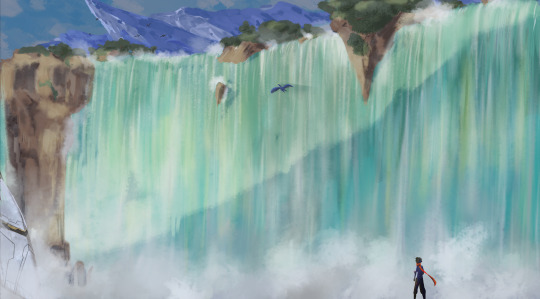
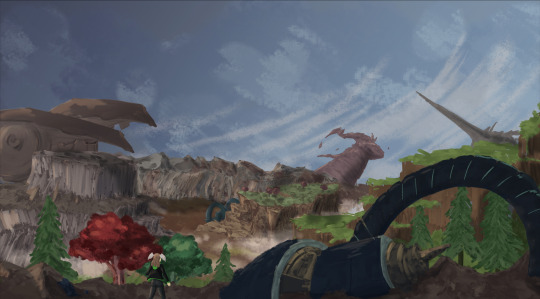

Pentelas, Fornis, Aetia
I tried digital painting, and now I want to cry! But Aionios was too pretty not to try.
#xenoblade 3#xenoblade chronicles 3#taion xenoblade#eunie xenoblade#mio xenoblade#xenoblade chronicles#I may force myself to try again and go for the other regions and our other three oroborous#but for now I just want this nightmare to end#I did Taion first and then forgot#for the other two#which brush I had used#xenoblade fanart
86 notes
·
View notes
Text
Ty for the tag @i-mybrunettelady
Tagging (only if u want ^v^)
@ratasum @wisp-enclosure @sunsrefuge @commander-wame and @brax-was-here! But no pressureee
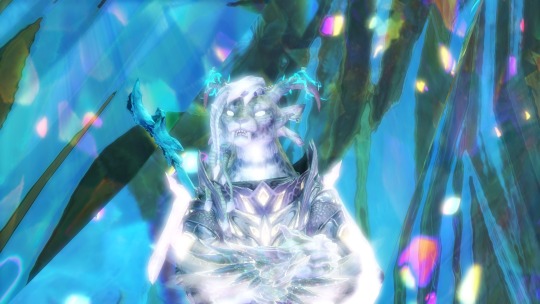
-- B A S I C S
Name: Spite Scorchedearth
Nicknames: n/a
Age: 27 at the start of the personal story, 38 currently
Birthday: 1298 scion (June 7th)
Race: Ash Legion Charr
Gender: Demigirl (she/they)
Orientation: Demisexual Biromantic
Profession: Commander, Champion/Herald of Aurene, Centurion of the Scorched Warband, unwilling Wayfinder
-- P H Y S I C A L A S P E C T S
Hair: White, originally brown
Eyes: Originally red, now either Leyline Blue or yellow scleras and blue irises (shifts depending on her form)
Fur: White Fur with brown spots (sorry I changed it to fur 😅)
Tattoos/Scars: Scar on left jaw, side of face, missing left hand, death scar on center of chest.
-- F A M I L Y
Family: Aetia Burntdancer (dam, living), Clement Forktail, (sire, Living)
Siblings: unnamed (so far) half sister
Grandparents: unnamed granddam and grandsire
In-laws and others: Trahearne (Mate, deceased) Valag (son, deceased), Caithe (Recent mate, living), Aurene (adopted daughter), Kalla Scorchrazor (great granddam), Pyre Fierceshot (great-great-great-grandsire, deceased), Vatlaaw Doomtooth (great-great-great-great-grandsire, deceased) Dragon's Watch (Adopted Family)
-- S K I L L S
Abilities: Necromancer (reaper skills & ability to cast necrotic flames), ability to brand others, and flight.
Hobbies: Reading, combat training, fishing, refining skills, weaponsmithing
-- T R A I T S
Most positive trait: kind-hearted, protective, confident, decisive, merciful.
Most negative trait: stubborn, unwilling to let others support her, anger issues, sometimes brash
-- L I K E S
Colors: Blue, desaturated green, black, white, purple.
Smells: Steel, cooking meat, grass
Textures: anything rough, petals, horns, opal brand
Drinks: Apple juice, coffee, tea
-- O T H E R D E T A I L S
Smokes: no
Drinks: very rarely
Drugs: no
Been arrested: twice
4 notes
·
View notes
Text
The [Many] Mistakes of Xenoblade Chronicles 3 That Can Still Be Fixed
There are many examples of missing/unfinished terrain geometry in Xenoblade 3. Some are minor—and some are pretty major—but there’s a concerning amount that are easy to spot and really give the over-world an ‘unpolished’ feel which slightly sours the image of a “send-off” to a trilogy of a much beloved series.
The issues I’m talking about are where there’s a missing texture or “face” on a part of geometry that basically allows you to either see right through a surface or even pass through it, possibly leading you out of bounds.
Here’s one [out of roughly 40] I found:

As you can see, the cliffside is missing an entire texture which allows you to see right through it. In-game it’s pretty noticeable, too, as it’s a decent portion of a large cliff that’s just completely missing.
It can be found south of Altruistic Maribel in Millick Meadows, Aetia Region:
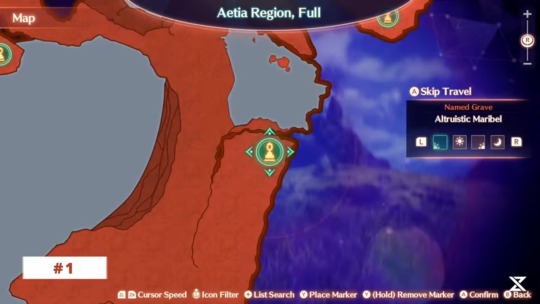
The funny thing is, if you look hard enough you can see it all the way from Colony 9 in Yzana Plains, Aetia Region. Remember though, this is just one example I’ve found. There’s many more, unfortunately.
I’m sure there’s good reason for this. Maybe the developers had to meet a deadline for Nintendo or maybe they just honestly didn’t notice [as a good portion of this game’s development time mainly took place during COVID].
All I know is the sooner we can get Monolithsoft to this the better. Eventually Monolithsoft stops doing patch updates for games, and for the last game in an amazing trilogy that’s supposed to be the “send off” title, I don’t want to see it left in this state. It would be nice for it to be the most polished Xenoblade out of them all since it takes what they’ve learned from all these years of making games. Alas, in its current form, it is anything but.
Here’s a video of mine showcasing 30+ similar issues
youtube
The video is technically outdated as I’ve found 10 additional [similar] problems, but there’s so many at this point Monolithsoft will just have to scour the world of Aionios themselves to find all of them as I’m sure there’s countless instances. This puts me under the assumption that none of these will ever get fixed because there’s so many that it would [probably] take more manpower than Monolithsoft is willing to put in, especially since they’re likely already working on their next major project.
Either way, I want to get this out there and seen by as many people as possible for awareness on the matter. Xenoblade 3 deserves to be the most polished in the trilogy due to its nature of capping off a legendary series.
The easiest way to get this to Monolithsoft is to fill out this form via their website explaining the issue and linking the video:
Note: they only accept messages in Japanese and will not read or respond to any messages in any other language
I’ve tried to reach out to them myself but only ever received an automated response saying that my message never made it to their team. I don’t have a local address [Japan] and I also had to use Google Translate for my message, so the issues probably weren’t conveyed correctly.
If there’s anyone out there fluent in Japanese that could help explain the issue to them properly via that form, it may end up getting fixed after all! That would be amazing. It would give Xenoblade 3 that extra bit of polish that it deserves!
Anyways, thank you for reading this and I hope you have an amazing week!
Xephia
🩷🩵
#monolithsoft#nintendo#nintendo switch#xenoblade#xenoblade chronicles#xenoblade chronicles 3#xenoblade 3#Youtube
5 notes
·
View notes
Text
I really should stop trying to fill the maps before I do all the quests. Last time I raged for hours in Aetia because I'd explored every corner and it wouldn't filled... The last missing landmark was in fact Zeon's fucking potato field OTL
#a twisted joke#also I have like 150 hours in this game and I still discovered an island in Erythia sea yesterday wut#xenoblade chronicles 3
18 notes
·
View notes
Text
i don't care i know 'etiology' is technically the correct spelling but i WILL be using 'aetiology'.
#the brits were right with this one sorry to say#mine#what you expect me to be talking about 'aetion' and 'aetia' and then say 'etiology'? nah
35 notes
·
View notes
Text
Arneis Festival of Argos

Arneios, the lamb-month, is so named for a myth unique to the Argolid.
Apollon and Psamathe, who was either a nymph or a mortal princess, had a son named Linos Αίνος. Psamathe attempted to hide her indiscretion from her father by concealing the baby boy amongst the new lambs. The baby, left cold and exposed, was attacked and consumed by sheepdogs. Psamathe’s grief at the discovery was so great she gave away her secret and her father had her killed.
Apollon was enraged at the deaths and sent a plague to Argos, targeting the very young. His oracle, presumably the Pythia upon the Larissa, declared to the city that the only way to rid themselves of the cursed plague was to propitiate Psamathe and Linos with sacrifices and lamentations, thus creating the lamb-festival Arneis or Arnis Ἀρνίς. The Argives also vowed to kill any dog that entered the agora during the three solemn days dedicated to their memory, nicknaming the festival Kynophotis Κυνοφόντις (dog-killing).
Personal Worship
To honour Linos and Psamathe in the Argive month of Arneios I abstain from eating any meat from sheep, and refrain from red meat whenever possible. As I have a pet dog, I have fashioned a braided white wool collar for him to wear during the three days of Arneis. White wool was commonly used in purity rituals. This is along with typical offerings, libations, and songs sung in memory of the two deaths and others caused by the plague, as well as prayers for the living.
🐑
Linos Perseus
Arnis Perseus
Pausanias 1.43.7-8
Conan Narrations, Photius
Callimachus, Aetia Fragment 1. 2
10 notes
·
View notes
Text
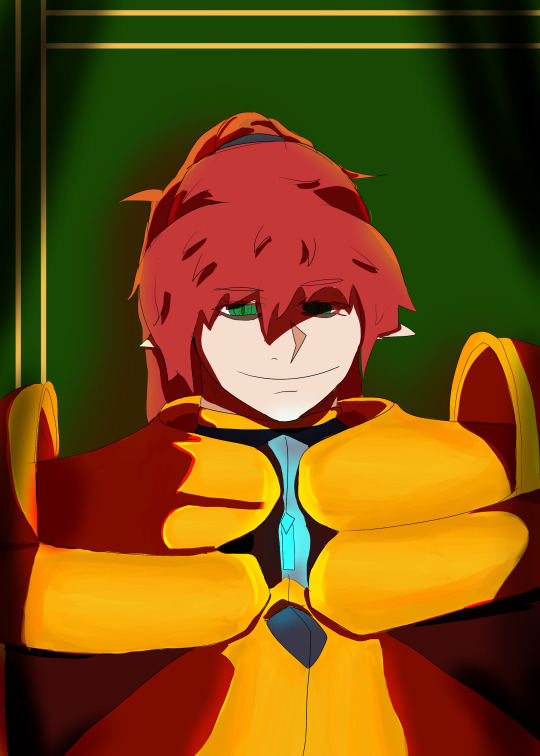
Yes, she is a female. No, this isn't Yharim.
Deep eyebags, a stretched smile, and the ever-present golden armor of the Tyrant. When this woman randomly appeared in the Jungle Empire and was given support by three of its lynchpins, those being Calamitas, Draedon, and Yharon, she immediately ascended the throne as its king.
The nobility had no say. The peasants didn't hear word of it until months after her ascension. And, after her first policies and speeches to the public, she was quickly accepted as the new king of the Jungle Empire.
At that point, it had become more of a clump of city-states rather than a distinct country. They were only held together by the beings of unfathomable power on top, those being its five lynchpins. Anyone who could gain the approval of that majority was already worthy enough of being king, and her actions were also very welcome in the eyes of all.
Under her policies and procedures, the entire empire had renewed into a whole state once more.
This wasn't an accident, of course. She had been groomed into the position by those lynchpins, even if one wanted nothing to do with her, another only saw it as an experiment, and the last was too interested in his partner's child to truly look deeper.
Her name was Aetia, and she was the only child of the Jungle Tyrant, Yharim.
Yes, that means Yharim fucked.
She's nearly eight foot tall, is physically strong, has a pair of wings grafted onto her back, has a few drug addictions, is mentally unwell, and has many, many parental issues. But the people love her, and she's very good at not making people think she's ill, so there's that. The eyebags are just part of the charm, obviously. It's not like she does super heroin to stay awake and do the mountains of paperwork she refuses to let anyone else touch, that would be weird.
Her total of three parents just bakes the cake on this one, too. Did I mention she doesn't eat? She doesn't eat.

She's also dirty as fuck. How much of a pain would it be to clean yourself if you're eight feet tall and wearing a golden suit of armor day-in and day-out?
Anyway, that's Aetia, whom I might post about sometimes because I think she's neat. Does she need to be hosed down? Absolutely. Does she need copious amounts of therapy? Get off drugs? Learn self-care? She'd disagree!
18 notes
·
View notes
Text
Arthur arriva en Bretagne au printemps, alors que Léodagan de Carmélide présidait l'alliance bretonne. De ce fait, il épousa Guenièvre. Union heureuse ou malheureuse, chacun aura son interprétation.
Mais s'il était arrivé plus tôt, ou plus tard ? S'il avait touché les côtes bretonnes en été, en hiver, en automne ?
Il aurait épousé Muirenn.
Il aurait épousé Oswyn.
Il aurait épousé Aetia.
Et si nul ne sait dire s'il s'en trouva plus ou moins heureux, on peut tout du moins affirmer qu'il s'en trouva fort différemment loti.
#kaamelott#le plus proche d'un pendranièvre que j'ai jamais écrit je crois#c'est super super self indulgent#le chap 2 sort demain les loulous#la majorité de la fic est déjà écrite
12 notes
·
View notes
Text
"They say that during the reign of Kronos Zeus and Hera were in love for three hundred years, as Kallimachos mentions in his Aetia, "Zeus loved [Hera] passionately for three hundred years". In secret, they came together without their parents' knowledge and they brought forth a son, Hephaistos, both of his feet deformed, as the poet says, calling him lame. The fact that they met secretly from their parents is also attested by the Poet, saying: 'they went to bed without their dear parents’ knowledge.'." (Schol. ad Il. 1.609 X)
This is a very rough and tentative translation, but the point is that the 300 year period in Zeus and Hera's relationship doesn't refer, as often claimed, to a "honeymoon" or "wedding night", but takes place before any formal marriage. The only other reference we have to this, a passage in the Dionysiaca of Nonnos, also places it before their marriage: "'I [Aphrodite] joined Zeus in wedlock with Hera his sister, after he had felt the pangs of longlasting desire and desired her for three hundred years ...'" (Nonnos, Dionysiaca 41.263 ff)
10 notes
·
View notes
Text

What is the branch of science that explores the causes or origins of diseases?
Etiology, derived from the Greek words "aetia" meaning cause and "logos" meaning study, focuses on unraveling the complex interplay of factors that lead to the onset of diseases. These factors can range from genetic predispositions and environmental influences to lifestyle choices and infectious agents. By understanding the etiology of a disease, researchers can identify risk factors, develop targeted interventions, and ultimately improve patient outcomes.
One of the primary goals of etiology is to identify the specific causes of diseases. This involves investigating the underlying mechanisms that trigger the development of a particular condition. For example, in the case of cancer, etiological research aims to uncover the genetic mutations, environmental exposures, or lifestyle habits that contribute to the initiation and progression of malignant tumors. By identifying these causes, scientists can develop strategies to prevent or mitigate the impact of these factors on disease development.
Etiological research often involves conducting epidemiological studies, which examine patterns of disease occurrence and distribution within populations. These studies help identify associations between certain risk factors and the development of diseases. For instance, epidemiological research has revealed a strong link between smoking and lung cancer, leading to widespread public health campaigns to reduce tobacco consumption.
0 notes